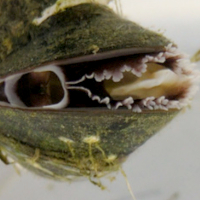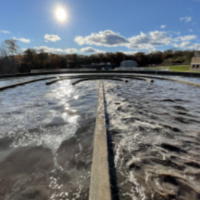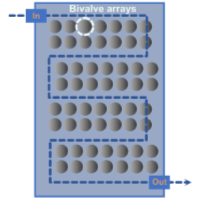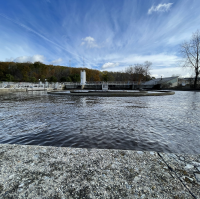
Use Co-Concentration to increase MP Degradation
Faculty Mentors: Burke, Gage, Mincer Location: UConn, Storrs
This research will focus on microplastic elimination by bacterial degradation. A closely–interacting cohort of students matched into three different labs will help how PHB MPs co–concentrated with PHB–degrading bacteria enhances MP degradation. Summer research fellows will collaborate within an interdisciplinary team and receive training on various aspects of the work. Baseline degradation will be measured by bringing together known strains of PHB degrading bacteria with stable isotope–labelled synthesized microplastics (13C–PHB, Burke) as the sole carbon source. Bacterial DNA will be isolated and incorporated 13C–PHB derived carbon will be quantified (Gage/Mincer).The results of this work will be compared with a similar protocol following co–concentration in mussels. Individual participants will focus on different strains or different portions of the workflow and all will work from well–established protocols.

Measure MP Removal in WWTP
Faculty Mentor: Li Location: UConn, Storrs
This research will allow the investigation of baseline characterization of Microplastics removal in a waste water treatment plant (WWTP). We will quantify MP removal stage–by–stage at the UConn WWTP. Summer research fellows will assist fully–trained graduate students with sampling and sample processing. MP type and concentration will be determined at six typical locations within the plant using an automated continuous flow particle–sorting sampler. Each size fraction from each location and time point will be processed to concentrate MPs and remove other materials. MPs will be verified by FTIR and Raman micro–spectroscopy, characterized by polymer type, size and shape, and then enumerated. Based on the mass balance tests in the plant and adsorption tests in labs, a series of models will be developed to advance understanding of microplastics fate in wastewater and interactions with other types of contaminants.

Develop Pilot Scale Mussel-Based MP Separator
Faculty Mentors – Ward, McManus Location: UConn, Avery Point
Research conducted in the Ward laboratory will employ freshwater mussels to quickly and efficiently remove > 90% of MP at pilot-scale. Dreissenid mussels process large volumes of water (up to 8 L/hr/g-dry weight) and can capture a myriad of suspended particles down to 1 µm with high efficiency. These species are prolific breeders and have life cycles that are much less complex than other freshwater bivalves, allowing them to be cultured in the laboratory. Additionally, zebra and quagga mussels can grow at high population densities and produce copious amounts of pseudofeces and feces containing particles that can be collected. During the process of removing MP from the water and producing biodeposits, mussels combine the particles with bacteria, some of which may be breaking down the plastic, transforming it into naturally occurring organic molecules. Dreissenid mussels have been used previously in engineering solutions to manage water quality in eutrophic waters, and to remove pharmaceuticals and heavy metals from wastewater effluent.

Implement New MP Treatment Technology
Faculty Mentor: Kirchhoff, Stuber Location: UConn, Storrs
This research will help better understand barriers to implementing new MP treatment technology. One to two students will work with Dr. Kirchhoff to review interview transcripts and to identify wastewater managers and others as research participants. The student(s) will identify additional wastewater managers as research participants through investigating plans, participation in state programs, and through EPA databases. Additionally, the student(s) will review interview transcripts to identify drivers and barriers to innovation and resilience among wastewater managers which will be used as a basis for developing a research survey. The student(s) may also help organize an expert elicitation process to inform the identification and prioritization of barriers and drivers relevant to this topic. Finally, one student will work with Dr. Stuber to analyze data and develop computational models for decision making. The student will work towards advancing the incorporation of drivers and barriers to innovation within existing technoeconomic analysis approaches.